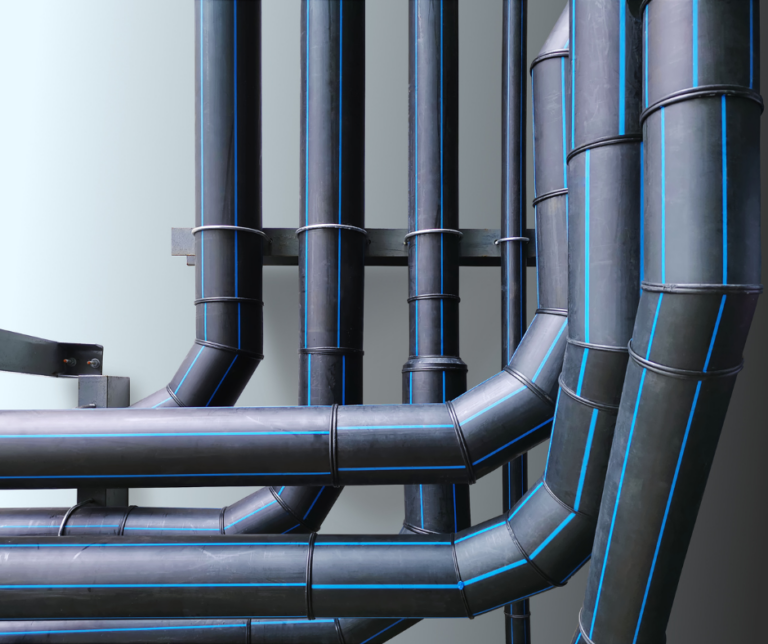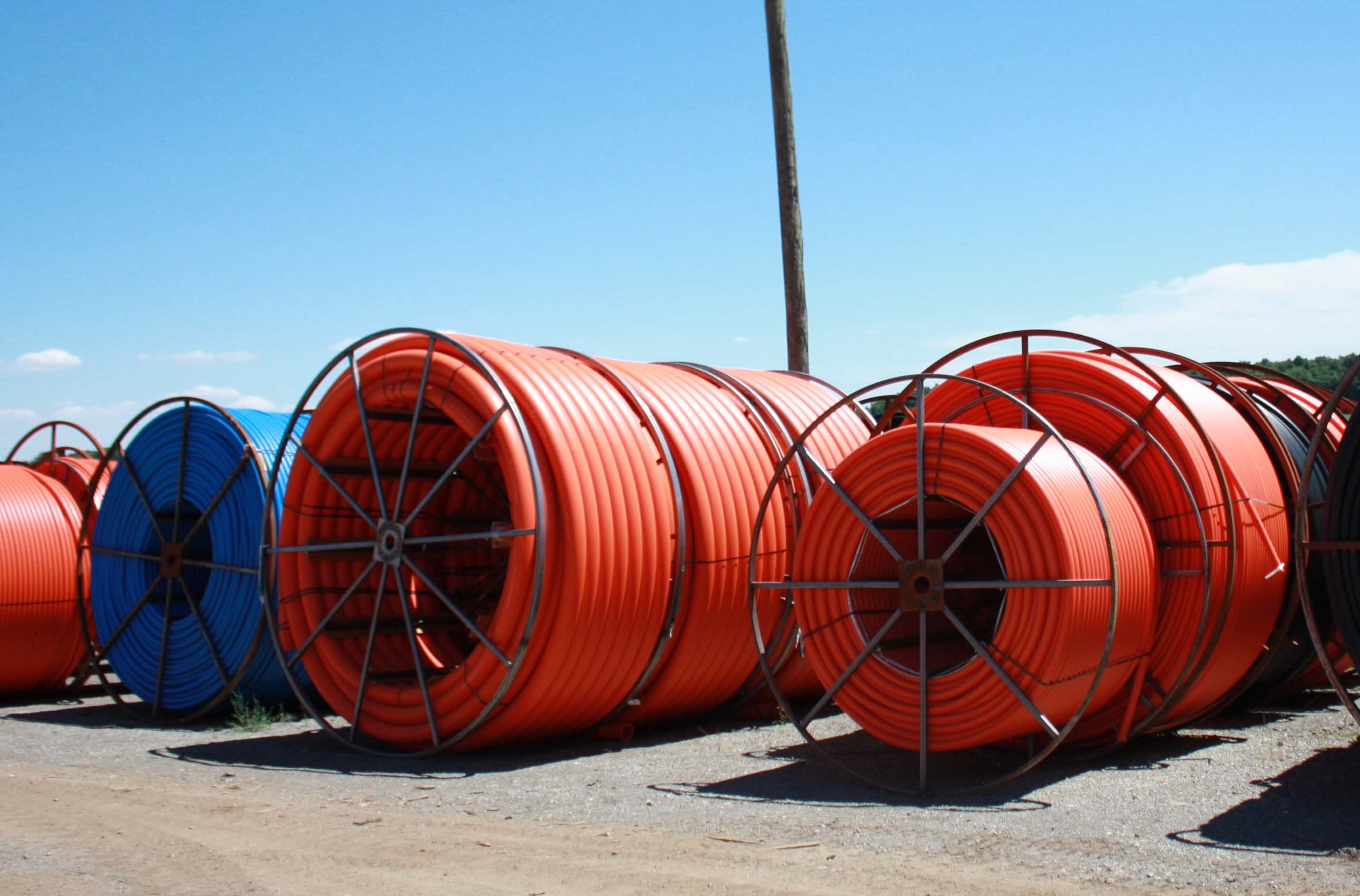The Comprehensive Resource to Pipe Manufacturing Midland TX for Industrial Needs
Discover the Production Process Behind High-Quality HDPE Pipe and Its Applications
The production procedure of top quality HDPE pipes is intricate and systematic. It begins with the option of resources that improve performance. Following this, ethylene goes through polymerization to develop material, which is then formed via extrusion. Quality control is paramount, making sure that the end product fulfills rigid standards. Nevertheless, the journey of HDPE pipes doesn't end with production. Their applications throughout various sectors reveal a wider importance worth taking a look at.
Recognizing HDPE: Qualities and Advantages

High-density polyethylene (HDPE) is a versatile thermoplastic known for its sturdiness and resistance to different environmental aspects. This material displays exceptional tensile strength, making it appropriate for requiring applications. Its low-density structure adds to a lightweight item, promoting ease of handling and installment. HDPE also showcases amazing resistance to chemicals, which minimizes destruction when subjected to harsh materials.
The material's low dampness absorption additionally enhances its longevity, making it suitable for usage in pipes and tank. In addition, HDPE is immune to ultraviolet (UV) radiation, making sure that products keep their stability even when revealed to sunshine. Its flexibility enables for the production of elaborate forms without jeopardizing strength. The environmentally friendly nature of HDPE, usually derived from recycled products, includes in its charm, advertising lasting techniques in production. In general, these residential or commercial properties and advantages make HDPE a preferred choice for numerous commercial and consumer applications.
Basic Material Choice for HDPE Production
The choice of resources for HDPE production is vital to confirm the last item meets the wanted specifications and high quality standards. High-density polyethylene (HDPE) is mostly produced from polymerized ethylene, originated from nonrenewable fuel sources such as gas or petroleum. The quality of these feedstocks substantially affects the mechanical and thermal properties of the last HDPE.
Ingredients additionally play a substantial role in boosting HDPE's performance, including antioxidants, UV stabilizers, and colorants, which improve resilience and resistance to environmental elements. The option procedure need to take into consideration not only the chemical make-up of the raw products but likewise their processing features to ensure reliable production.
The sourcing of raw products ought to focus on sustainability and conformity with ecological policies, as liable methods are imperative in today's market. Ultimately, careful raw product choice lays the foundation for generating high-quality HDPE pipelines appropriate for varied applications.
The Extrusion Process: Forming HDPE Pipeline
The extrusion procedure plays a vital duty in forming HDPE pipelines, starting with meticulous product prep work methods that assure excellent flow and consistency. Similarly essential is the layout of the die, which directly influences the last dimensions and surface area top quality of the pipeline. With each other, these factors add greatly to the performance and high quality of HDPE pipeline manufacturing.
Product Prep Work Methods
Reliable manufacturing of HDPE pipes starts with meticulous product prep work strategies, particularly the extrusion process. During this phase, high-density polyethylene material is very first dried out to remove dampness, ensuring suitable flow features. The resin is after that fed right into the extruder, where it undertakes heating and melting, changing into a thick state. This home heating process is meticulously controlled to maintain the product's stability and efficiency. The molten HDPE is forced through a die, shaping it right into a continual pipe form. Proper temperature level administration during extrusion is crucial, as it directly influences the material's buildings and the end product high quality. When formed, the HDPE pipe is cooled and cut to defined sizes, ready for succeeding handling and applications.
Die Layout Relevance
Precision in die layout plays an important role in the extrusion process of HDPE pipelines. The die acts as the last shaping device, straight influencing the pipe's measurements, wall thickness, and surface area coating. A properly designed die assurances uniform product flow, minimizing flaws such as irregularities and vulnerable points. The geometry of the die need to be optimized to suit the certain buildings of HDPE, including its thickness and thermal habits throughout extrusion. In addition, the cooling rate of the material as it goes through the die can considerably influence the pipeline's architectural integrity. As a result, purchasing advanced die technology is essential for suppliers aiming to produce top quality HDPE pipelines that satisfy industry criteria and customer expectations.
Quality Assurance Actions in HDPE Manufacturing
Although numerous elements affect the quality of HDPE pipeline manufacturing, efficient quality assurance steps are crucial to ensure consistency and dependability in the final product. Key top quality control methods include extensive product assessment, validating that the raw polyethylene meets well-known standards for pureness and density. During the extrusion process, parameters such as temperature, pressure, and cooling time are closely kept an eye on to preserve dimensional precision and structural stability
Additionally, post-production testing is crucial; suppliers typically perform hydrostatic tests to evaluate the pipe's strength and resistance to pressure. Aesthetic assessments for surface defects better enhance high quality guarantee. Certification from relevant criteria organizations, like ASTM or ISO, gives an extra layer of reliability. By applying these thorough high quality control steps, producers can lessen issues, enhance efficiency, and make sure that the HDPE pipes fulfill the certain demands of different applications, ultimately leading to customer fulfillment and count on the item.
Applications of HDPE Pipe Throughout Industries
HDPE pipes are made use of throughout various sectors because of their toughness and adaptability. In water distribution systems, they ensure efficient delivery, while in wastewater monitoring, they provide trusted options for waste transportation. Furthermore, farming irrigation networks gain from HDPE's resistance to rust and flexibility, making it a perfect selection for contemporary farming methods.

Water Circulation Equipments
A significant number of industries depend on high-density polyethylene (HDPE) pipelines for effective water distribution systems. Understood for their resilience and resistance to rust, HDPE pipelines are extensively utilized in local water supply networks, agricultural watering, and commercial applications. Their lightweight nature promotes very easy handling and installment, reducing labor expenses and time. Furthermore, HDPE pipelines can accommodate numerous stress levels, making them appropriate for both low and high-pressure systems. American Plastics HDPE Pipe for Oilfield. The flexibility of the product permits smooth combination right into existing infrastructure, lessening the need for substantial excavation. Additionally, HDPE's resistance to chemical seeping guarantees that the water supplied remains risk-free and tidy, making it a perfect choice for preserving the high quality of potable water throughout various markets
Wastewater Management Solutions
Efficient water distribution systems additionally lead the method for innovative wastewater administration solutions, where high-density polyethylene (HDPE) pipelines play a substantial function. Distinguished for their durability and resistance to deterioration, HDPE pipelines are ideal for transferring wastewater in different settings. Their adaptability enables very easy installment in complex environments, reducing the need for extensive excavation. Additionally, HDPE's smooth indoor surface minimizes rubbing, boosting circulation prices and effectiveness. These pipes are additionally resistant to chemical leaching, ensuring that pollutants do not jeopardize the surrounding atmosphere. Industries, communities, and therapy centers increasingly count on HDPE pipelines for their reliability and long life, making them a preferred selection for modern-day wastewater monitoring systems. This adaptability emphasizes the important significance of HDPE pipelines throughout numerous applications.
Agricultural Watering Networks
Agricultural irrigation networks benefit greatly from making use of high-density polyethylene (HDPE) pipes, which supply efficient and trusted water shipment to crops. HDPE pipelines are lightweight, making them easy to deliver and set up, while their adaptability enables numerous configurations in varied terrains. These pipes show outstanding resistance to corrosion, chemicals, and UV radiation, guaranteeing sturdiness in extreme farming atmospheres. Furthermore, their smooth indoor surface minimizes rubbing loss, enhancing water circulation and reducing energy expenses connected with pumping. The durability of HDPE pipes, usually surpassing half a century, adds to reduce upkeep and substitute costs. As a result, farmers increasingly count on HDPE pipelines to boost watering effectiveness and advertise sustainable farming methods, ultimately resulting in boosted crop yields and source preservation.
Future Trends in HDPE Pipe Modern Technology
As the demand for lasting and effective facilities expands, developments in HDPE pipe innovation are positioned to change numerous sectors. Arising trends consist of the combination of wise modern technologies, such as sensors and IoT abilities, which assist in real-time tracking of pipeline conditions, decreasing upkeep prices and stopping leakages. In addition, the growth of sophisticated production techniques, such as 3D printing, is allowing the manufacturing of facility, tailored pipeline styles that accommodate details job requirements.
The focus on recycling and round economic situation methods is driving the advancement of HDPE pipes made from recycled products, boosting sustainability. Boosted jointing approaches, such as electro-fusion and mechanical fittings, are also boosting setup efficiency and integrity. Lastly, the growing emphasis on environmental guidelines is pressing manufacturers to take on greener production processes, making certain that HDPE pipelines not only satisfy sector standards yet likewise cultivate a more sustainable future for framework advancement.
Often Asked Concerns
How Does HDPE Compare to Various Other Plastic Products?
HDPE exceeds several various other check here plastic products regarding sturdiness, chemical resistance, and flexibility. Its low thickness and high tensile toughness make it ideal for numerous applications, often surpassing choices in both performance and durability.
What Are the Environmental Impacts of HDPE Production?
The ecological effects of HDPE manufacturing include greenhouse gas emissions, energy usage, and potential pollution from making processes. Furthermore, incorrect disposal can cause dirt and water contamination, raising concerns concerning long-term eco-friendly effects.
Can HDPE Piping Be Recycled?
Yes, HDPE pipelines can be recycled. Several facilities accept utilized HDPE for handling, changing it into brand-new items. This recycling adds to sustainability initiatives, decreasing plastic waste while saving resources and power in the production cycle.
What Is the Life-span of HDPE Water Lines?

How Do Temperature Variations Impact HDPE Pipe Efficiency?
Temperature level variants greatly impact HDPE pipeline efficiency, impacting flexibility and stamina. Heats can lead to softening, while reduced temperatures might trigger brittleness, inevitably affecting the pipe's resilience and viability for various applications in diverse atmospheres.